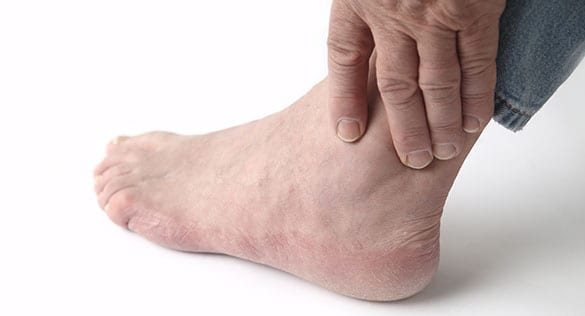
The doctors at LA Orthopedic Group can help treat Chronic Ankle Instability.
Chronic ankle instability is a debilitating condition that begins with a simple ankle sprain. Ankles include strong ligaments for support, but when those ligaments stretch past their normal limits, they tear, resulting in a sprain.
- Sprains are common, but certain sports and activities increase the risk
- Sprains can be mild to severe
- Most heal with just rest and ice, but others need medical attention
CONTACT US TODAY
Non-Operative Treatment
Braces are typically used to stabilize the ankle area and prevent further sprains, but this does not treat the underlying condition of ankle instability. Most often when braces are recommended, it is in conjunction with other non-operative treatments, including rehabilitation or physical therapy. The main focus of non-operative treatment is to strengthen the ankle joint. Muscles may need to be retrained, and some patients may receive specific treatment related to activities or sports they do or play. Physiotherapy methods such as neuromuscular training should help improve strength, stability and coordination. When non-operative methods prove totally ineffective or don’t offer enough help, surgery is considered.


Surgical Intervention
When an ankle joint is unstable or ligaments are loose after non-operative treatments, an orthopedic doctor may recommend surgery to tighten or shorten ankle ligaments. A tendon may be removed from the lower leg and inserted as an outer ankle ligament. This works well because ligaments are made from similar tissue as tendons. Surgical options fall into two categories; anatomic repair and tenodesis stabilization. Anatomic repair is for the restoration of normal anatomy and biomechanics of lateral ankle ligaments while also maintaining the joint’s motion. Tenodesis stabilization is effecting for many patients in achieving stability, but there is a loss of motion and normal ankle biomechanics.
Choosing a Treatment Option
Patients should understand that treatment is necessary to see any improvement. Non-operative or surgical treatment considerations should be made in consult with an orthopedic physician who is experienced in treating chronic ankle instability. An exam may include imaging tests, such as x-rays, to see the full extent of the condition. A physician will know if the condition can be helped without surgery or if surgical intervention is necessary right away.




